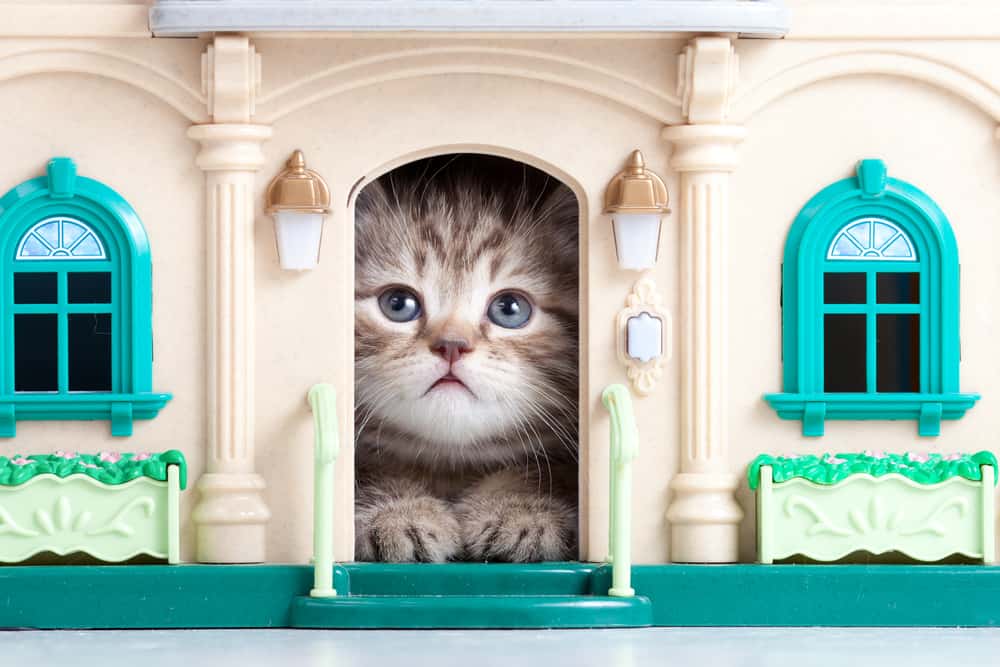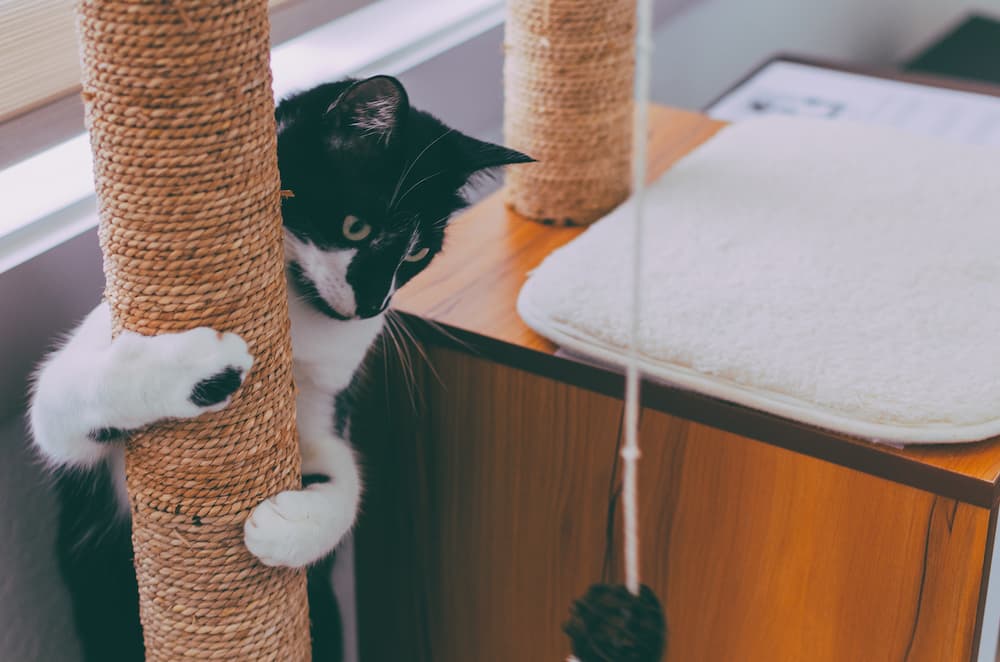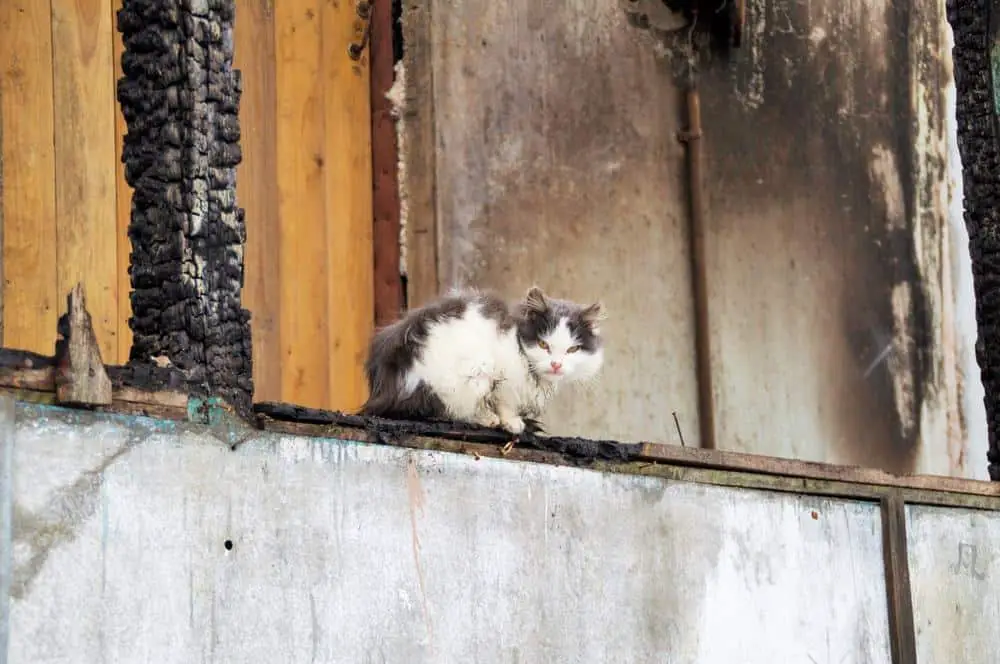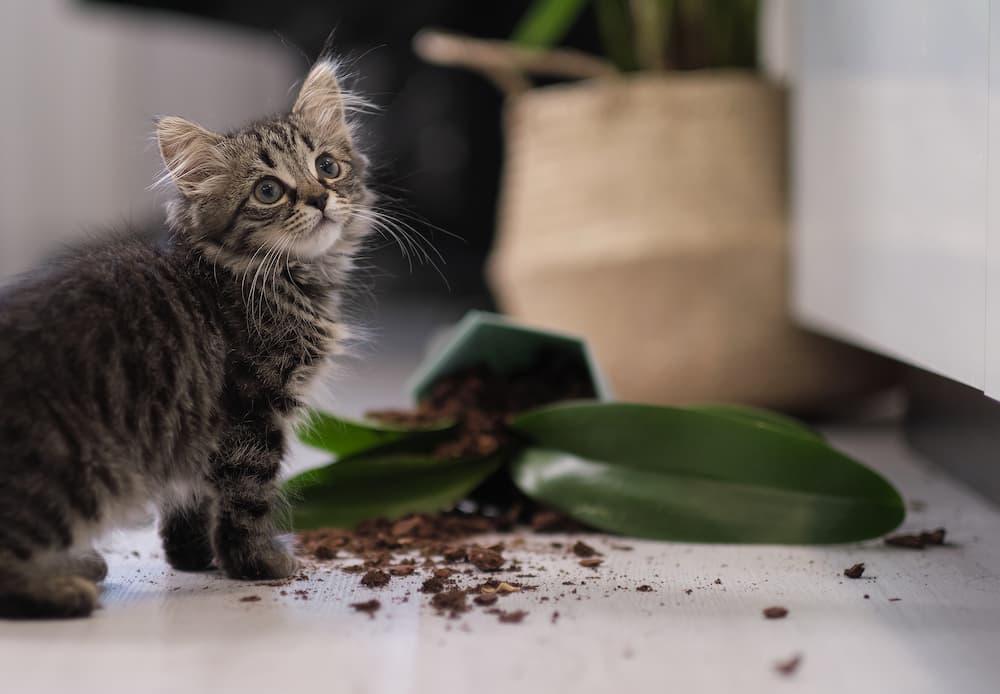Ever hear the saying, “curiosity killed the cat?” Cats, especially kittens, can be very curious – it’s part of their charm! But, that curiosity can also get kitties into trouble if their humans don’t take a few extra precautions by pet-proofing at home to ensure their safety.
Here are some ways to pet-proof your home before bringing in a new cat or kitten:

Pet-Proofing the Kitchen
Certain foods and other common kitchen items may not seem like a threat to us, but for little paws and curious minds, they can spell disaster. Be aware of what foods are toxic to your new kitty, and never leave them out! Some dangerous foods include avocados, raisins, grapes, onions, coffee grounds, and of course, chocolate.
When cooking on the stove, be sure it has completely cooled before leaving it unattended. All it takes is one jump onto the stovetop to seriously burn those precious paws. Or, see this guide on how to train your cat to stay off the counters.
Keep twist ties, batteries, string, and other small items safely put away in a drawer. They may look like fun little toys for your cat to bat around, but can cause serious harm if swallowed.
Put your cat in another room if you’re cleaning your oven to avoid exposing him to hazardous chemicals.
If you’ve got an especially curious kitty, you should install child locks on your cabinet doors, especially cabinets that hold dangerous and toxic cleaning chemicals. Consider using these pet-friendly cleaning products in place of more harsh chemicals.
Pet-Proof the Bathroom
It’s no secret that cats love to follow their humans into the bathroom! Be sure that room is a safe place by putting away medications, dental floss, toothpaste, and cleaning supplies – all of which pose a safety threat to our furry friends.
Don’t leave water in the sink and close your toilet lid when you leave the bathroom. While some might not consider it, both a full sink and a toilet full of water pose a drowning threat for little kittens. You also don’t want your cat to drink from a sink or toilet that’s been cleaned with harsh chemicals.
Pet-Proofing In the Living Room
If you spend a lot of time in your living room, chances are good that your new cat will spend a lot of time there with you! Be sure the living room is a safe place.
If you have a fireplace, keep a fireplace screen in front of it to shield your furry friends from fire and ashes.
Kitties are notorious for chewing on cables and wires – so cover the wires to avoid damage and electrical shock.
Wrap up the cords on your mini blinds. They are both a hazard if eaten, and a strangling hazard for curious kitties who like to play with them.
Pet-Proofing in the Bedroom
Bedrooms are generally safe areas for kitties to lounge around in, but be sure to always keep your hair ties, clips and pins safely out of reach. Cats love hair ties, but they can cause an intestinal blockage if swallowed. Provide safe cat toys instead.
And, when you take off your earrings, rings or watches, tuck them safely away in a drawer or jewelry box to keep them away from curious paws.
Pet-Proofing Outdoors
We recommend keeping your kitty indoors at all times! There are just too many dangers outside – traffic, other animals, and parasites, among them. In order to let your new cat safely enjoy the great outdoors, build her a catio or enclosure that will keep dangers away.
If you do allow your cat to go outside, be sure you always provide fresh water, and keep identification on your kitty.
Choose pesticides and lawn care products that are safe for pets. Many chemicals can burn your cat’s paws or make her really sick if she ingests them.
A few other things to consider…
Keep trash cans covered or inside a cabinet.
Know what houseplants are toxic to cats and keep them out of your home.
When doing laundry, double-check that your cat hasn’t climbed into the dryer before you turn it on. You’d be surprised how often this happens!
Look out for paws, noses, and tails when you shut doors.
By taking just a few extra precautions when bringing a new kitty into your home, you’ll help ensure his or her safety for years to come!
What other safety tips do you have for new cat parents? Tell us below!
The Catington Post is reader-supported. That means, if you make a purchase through links on our site, we may earn an affiliate commission. All images and names which are not the property of The Catington Post are the property of their respective owners.







